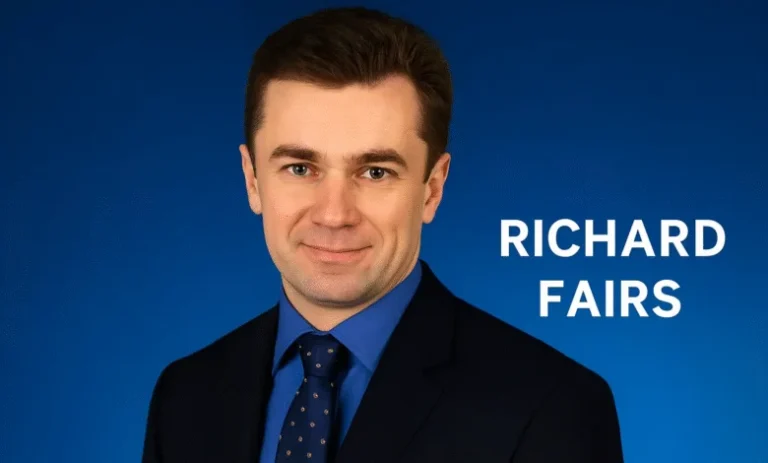Introduction
Richard Fairs is a British chartered building surveyor who prefers to let his work speak for itself. Known in professional circles for a steady, methodical approach to building pathology and conservation, he has built a career balancing technical skill with practical problem solving. Outside work he has drawn public attention for his personal life, most notably his marriage to comedian and actor Miranda Hart.
Early life and training
Born and raised in the southwest of England, Fairs trained in building surveying and stayed close to the practical side of construction throughout his career. He completed postgraduate study in building conservation and went on to qualify as a chartered surveyor. That blend of conservation training and hands-on experience shaped his reputation as someone comfortable both in delicate restoration projects and in diagnosing everyday defects in lived-in homes.
Career and approach
Fairs has worked across private and heritage sectors, often advising on damp, mould and structural repair issues that require both technical knowledge and a clear communication style with clients. His LinkedIn profile and company listings describe more than two decades of post-qualification experience and a focus on conservation. In practice, that means detailed inspection reports, pragmatic repair specifications, and an emphasis on long-term performance rather than quick fixes.
The Building Consultancy and professional footprint
As the director of a building consultancy practice, Fairs has overseen projects ranging from residential surveys to conservation-led repairs. Colleagues describe him as deliberate and thorough, the sort of professional who can translate complex technical problems into clear next steps. That reputation helps explain why clients hire independent surveyors: to get unbiased, technically robust advice that an owner, contractor or insurer can rely on.
How he met Miranda Hart
Fairs’ name reached a wider audience when his relationship with Miranda Hart became public. The two met during the 2020 lockdown when Hart hired professionals to deal with mould and damp at her London home. Their friendship grew from there and they later married in a small ceremony in July 2023. The story has been covered by several lifestyle and entertainment outlets, and both have spoken about their relationship in gentle, private terms.
Balancing privacy and public interest
Although his marriage connected him to celebrity coverage, Fairs has mostly maintained a low public profile. He continues to work in his field and engage professionally with surveyor networks. For many in the industry that low-key presence is reassuring; it suggests someone focused on craft rather than self-promotion. Where public curiosity exists, Fairs appears to meet it on his own terms, allowing his professional record and discreet interviews to define the public narrative.
The practical side of surveying: why it matters
Surveying is often invisible until a problem appears. When it does, those problems can be expensive, disruptive and emotionally draining. Fairs’ approach emphasizes clear diagnostics, prioritizing remedial steps, and communicating the financial implications to homeowners. Whether addressing mould, condensation or structural movement, a careful surveyor reduces uncertainty and helps owners make informed decisions.
Typical projects and real-world impact
Typical projects give a clear sense of why surveying matters. On site a surveyor will check roofs, external walls, damp-proofing, and joinery; inside they will look for signs of condensation, rising damp and structural movement. The aim is to give homeowners confident choices: repair now, monitor, or commission specialist investigations. Where mould and damp are present, for example, the solution often combines repair, better ventilation and practical changes to how the space is used.
Conservation and heritage work
When conservation comes into play, patience becomes more important than speed. Historic fabric should be conserved where possible and replacements must match original materials and methods. That care preserves character and long-term value. Surveyors trained in conservation juggle legal constraints, traditional craft skills and modern performance needs. The result is repair work that looks right and lasts.
Professional ethics and client communication
Good surveyors are patient communicators. They translate technical findings into options that non-specialists can understand. That requires patience and an ability to prioritise. A clear report will show which defects require immediate attention and which can be monitored. It will explain costs and risks in plain language. That ethic of clarity and service underpins the trust placed in surveyors like Fairs.
The human side of building care
Buildings are not just materials. They are the backdrop to family life and local history. Whether advising on a Victorian terrace or a modern apartment, a surveyor’s work reduces uncertainty and helps owners make choices that keep their homes safe and comfortable. For professionals who work largely behind the scenes, that practical contribution is its own reward.
Final thoughts
Public interest can be fleeting. A marriage or a headline can draw attention for a moment, but the lasting measure of a professional is the quality of their work and their impact on clients and buildings over time. Richard Fairs’ career offers a clear example of that. He brings technical training and steady judgement to problems that matter deeply to property owners. In a field defined by measurements, reports and repairs, his story is quietly effective: sensible advice, careful conservation and steady judgement.
